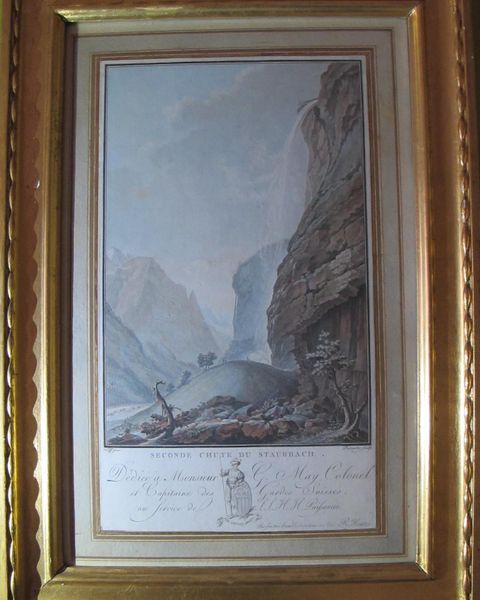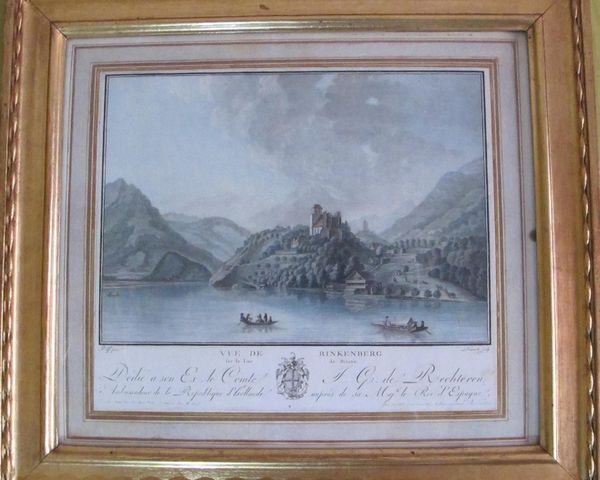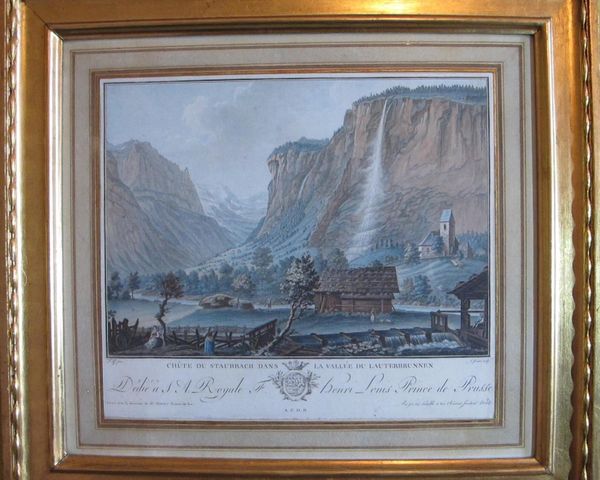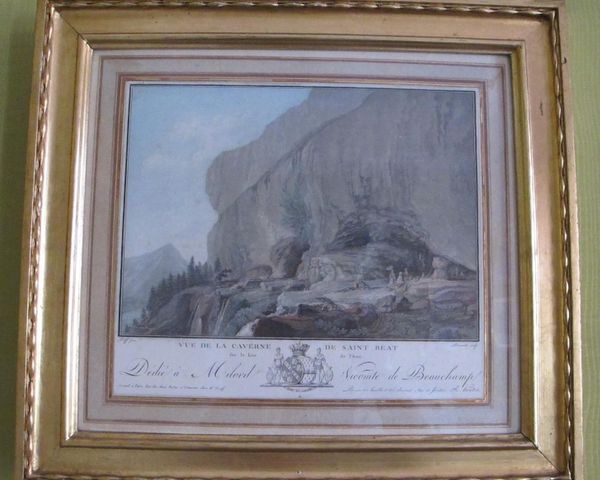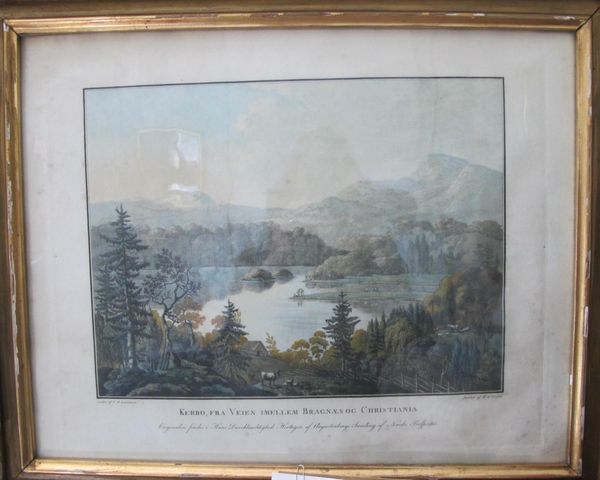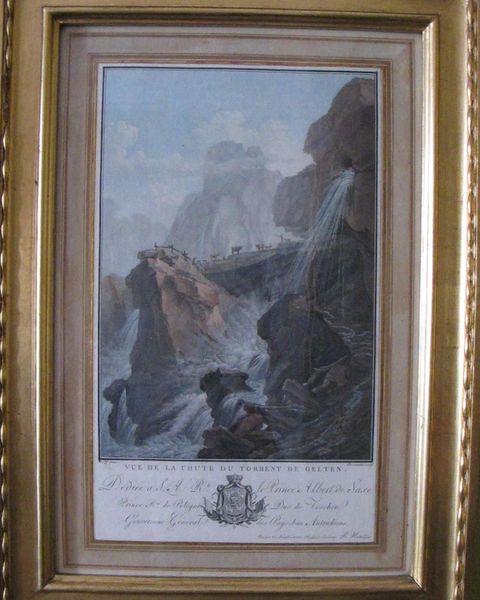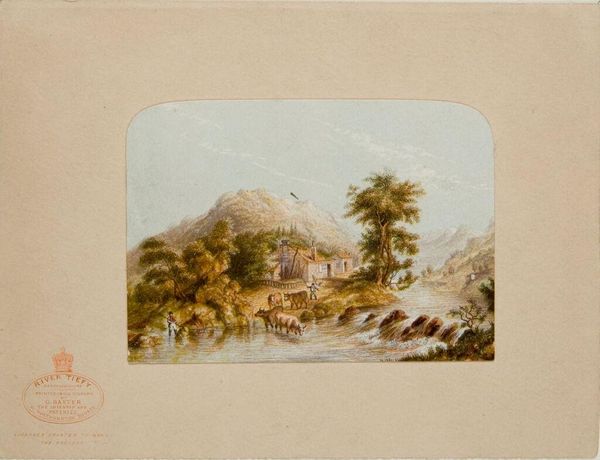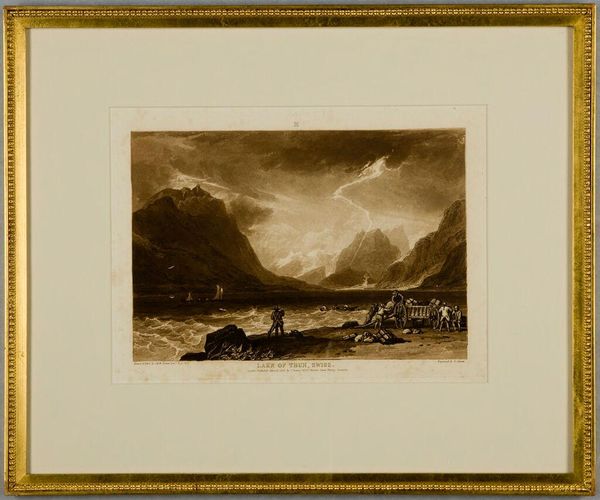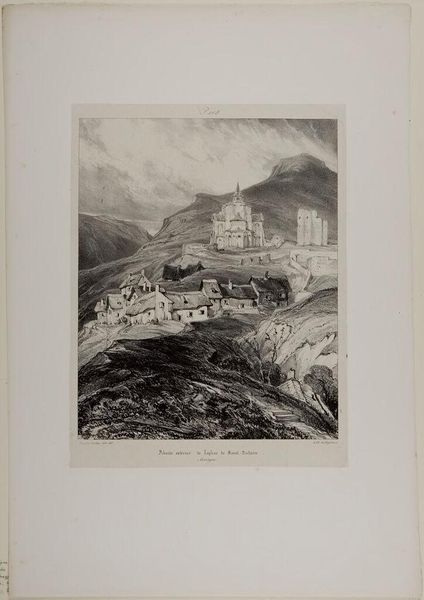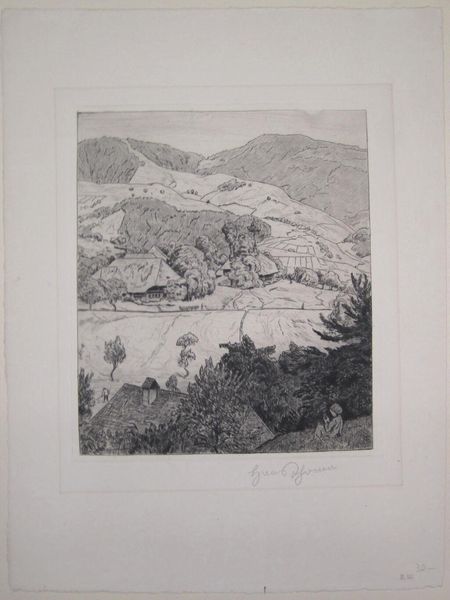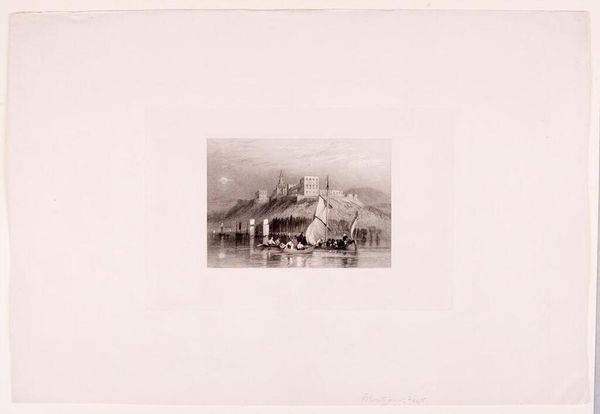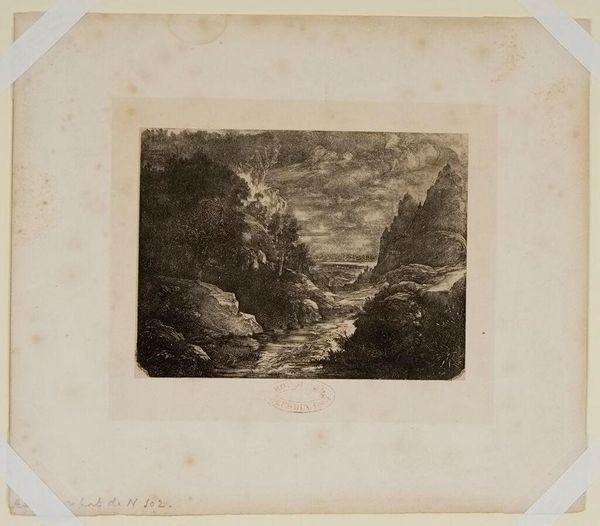
'Hic libertatem nostri posuere parentes' 18th century
0:00
0:00
aquatint, print
#
aquatint
#
water colours
# print
#
possibly oil pastel
#
oil painting
#
underpainting
#
painterly
#
painting painterly
#
watercolour bleed
#
watercolour illustration
#
mixed media
#
watercolor
Dimensions: 350 mm (height) x 398 mm (width) (netto)
Curator: Here we have Charles Melchior Descourtis’ "'Hic libertatem nostri posuere parentes'" from the 18th century. It's an aquatint print, quite lovely. Editor: My initial impression is one of quietude. The soft watercolor tones lend the scene a delicate, almost ethereal quality. The composition, with its receding planes, is rather expertly managed. Curator: Indeed. Descourtis seems to be channeling a sense of rootedness in the landscape, literally declaring, through the print's title "Here our parents placed liberty." Notice the idealized rural imagery of the small farm houses in the valley, framed against a distant mountain range. It seems to yearn for a pre-industrial world, evoking concepts of patriotism and ancestry. Editor: Yes, the rural setting functions as more than just scenery; it's imbued with symbolic weight. The placement of the houses, the small lake at the side - all work in harmony. Descourtis carefully employs perspective to guide the viewer's gaze through these pictorial markers. Are those Latin phrases inscribed along the bottom edge? Curator: Precisely. "Hic libertatem nostri posuere parentes," translates roughly to, “Here our ancestors established liberty." Descourtis cleverly utilizes language as another visual element of symbolic authority, lending gravity to the landscape it depicts. See how this inscription, coupled with the two medallion-like seals, works together with the tranquil composition, amplifying its thematic power? Editor: These features definitely cement that feeling. But the composition doesn’t strike me as inherently patriotic at first glance; there is, admittedly, an intentional timeless quality within its construction. Note how he uses washes of color instead of hard lines in areas like the waterfall—effectively diffusing any sort of distinctness or political message beyond generalized, universal peace. Curator: An interesting point. I’d say the absence of distinct temporal markers itself serves a rhetorical purpose. It casts the concept of liberty as perpetually inherent to the landscape itself, belonging to no single era, yet informing cultural identity. The symbolism inherent here is not necessarily revolutionary, but deliberately conservative, reaching into the past. Editor: I appreciate your reading, how we discover a more complex layering of meaning than initially perceived due to the symbolic intent, instead of surface presentation. Curator: Exactly, the artist utilizes universal imagery infused with an important concept for that historical time. Editor: Yes, understanding the pictorial space this aquatint created gives it its own unique feel and effect.
Comments
No comments
Be the first to comment and join the conversation on the ultimate creative platform.
